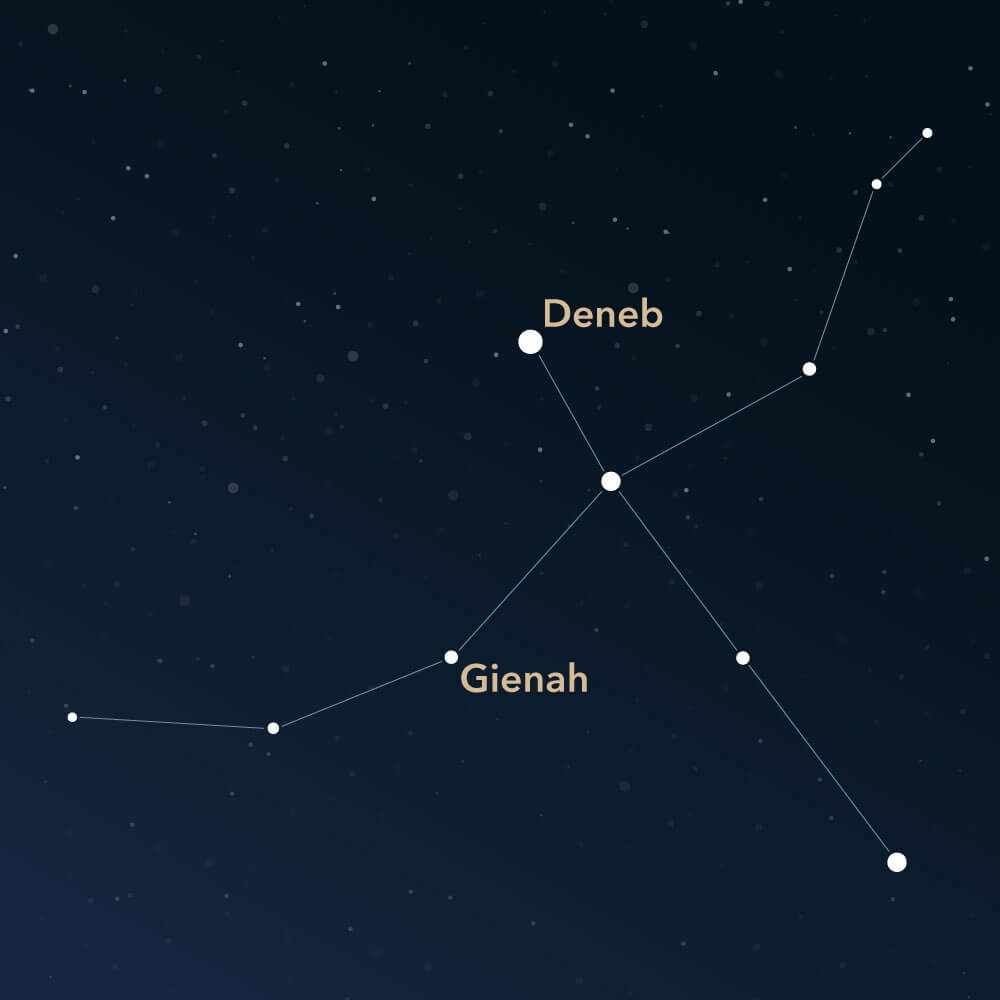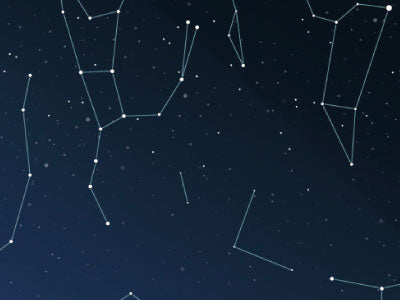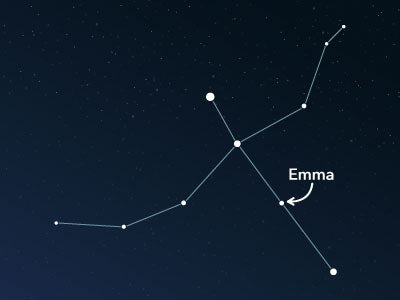The constellation Cygnus
Characteristics
- Other names / Symbolism
- Swan
- Hemisphere
- Northern hemisphere
- Visibility
- June - October
- Area
- 804 deg²
- Brightest star
- Deneb (HIP number 102098)
- Specialties
- Open star clusters, planetary nebulae, emission nebulae, reflection nebulae, supernova remnant, galaxies, dark clouds

The Cygnus, Latin for Swan, is an extensive and distinctive constellation in the northern sky. It is one of the 48 constellations described by the Greek-Roman astronomer Claudius Ptolemy in ancient times. The area of the sky it covers contains a variety of different deep-sky objects.
Hemisphere, visibility, and area
The constellation Cygnus is visible from everywhere in the northern hemisphere, but south of the equator, it is only visible up to the 29th parallel. Therefore, it can only be observed from regions north of places such as Durban in South Africa, Porto Alegre in Argentina, or Brisbane in Australia.
The months of June through October offer the best conditions for observing the constellation, which spans approximately 804 square degrees on the celestial sphere. In comparison to all 88 constellations, it ranks 16th in terms of size.
Finding Cygnus is not difficult, as it forms the Summer Triangle together with the constellations Lyra and Aquila. This is a connection of the three brightest stars (Vega, Altair, and Deneb) of the three most prominent constellations of the summer and autumn sky.
Deneb (Latin: α Cygni, Alpha Cygni) is the brightest star in Cygnus. Its name comes from Arabic and can be translated as "tail." It is a blue supergiant star in the phase of evolving into a red supergiant. Its apparent magnitude is approximately 1.2.
Cygnus is one of the most recognizable constellations in the northern summer and autumn celestial sky, which includes a notable asterism referred to as the Northern Cross, in contrast to the Southern Cross.
The surrounding constellations can also serve as good reference points for locating Cygnus in the night sky. To the north, it borders Cepheus and Draco. To the east and south, the constellations Lyra and Vulpecula lie. To the west, it borders Pegasus and Lacerta.
Specialties in the constellation
The area of the Cygnus contains the Milky Way, which creates many interesting nebulae and stars. These include a series of open star clusters, planetary nebulae, emission nebulae, and reflection nebulae. Additionally, a lenticular galaxy, a radio galaxy, a supernova remnant, as well as dark clouds and protoplanetary nebulae can be discovered. Two objects are described in more detail below.
Slightly east of the star Deneb is the emission nebula NGC 7000, also known as the North America Nebula. Its name comes from its shape, which resembles a map of the continent. It is a diffuse gas nebula primarily composed of hydrogen, which appears deep red in astronomical photographs. Its distance from earth is estimated to be between 2,000 and 3,000 light-years. The object can be observed with prism binoculars under good conditions, such as dark moonless nights with little light pollution.

The Cirrus Nebula or Veil Nebula is a visible area of a supernova explosion consisting of several emission and reflection nebulae. The explosion occurred approximately 8,000 years ago. The German-British astronomer William Herschel discovered the collection in September 1784. The objects are located south of the star Gienah (Latin: ε Cygni, Epsilon Cygni) and can be observed with binoculars on dark nights. Further structures can be seen through a telescope.

Mythology
The mystical bird in the night sky gives rise to various versions of the origin of the constellation.
In the most well-known narrative of Greek mythology, the Cygnus represents the god Zeus, who pursued young women in the guise of the beautiful and gentle creature. He seduced the unsuspecting Nemesis by posing as the hunted swan, whom she took in and cared for. Nine months after this incident, she gave birth to a white egg, which she shamefully hid in the forest.
There, a shepherd found it and brought it to Leda, the queen of Sparta. She had the egg hatched, and after some time, Helen was born, who became the epitome of beauty in ancient times and the trigger for the Trojan War.
Zeus also seduced the Spartan queen Leda herself in the form of a swan on her wedding night with King Tyndareos, resulting in the conception of the twins Castor and Pollux (known as constellation Gemini).
In another version, the story is about Cygnus, a friend of the son of the sun god Helios. When he fell into the river Eridanus and was burning, Cygnus swam out in horror and tirelessly searched for his friend. Zeus was moved by his loyalty and friendship and transformed him into a swan, placing him in the sky as an example of faithfulness and friendship.
PublishedRead more interesting articles

An overview of all 88 constellations
Learn more about all 88 constellations and read interesting information about the mythology, visibility, and features.

Planetarium App
Discover the night sky with our planetarium app!
Available for iOS and Android.

Name a star in the constellation Cygnus
Name a star in a constellation and create something that lasts for eternity.